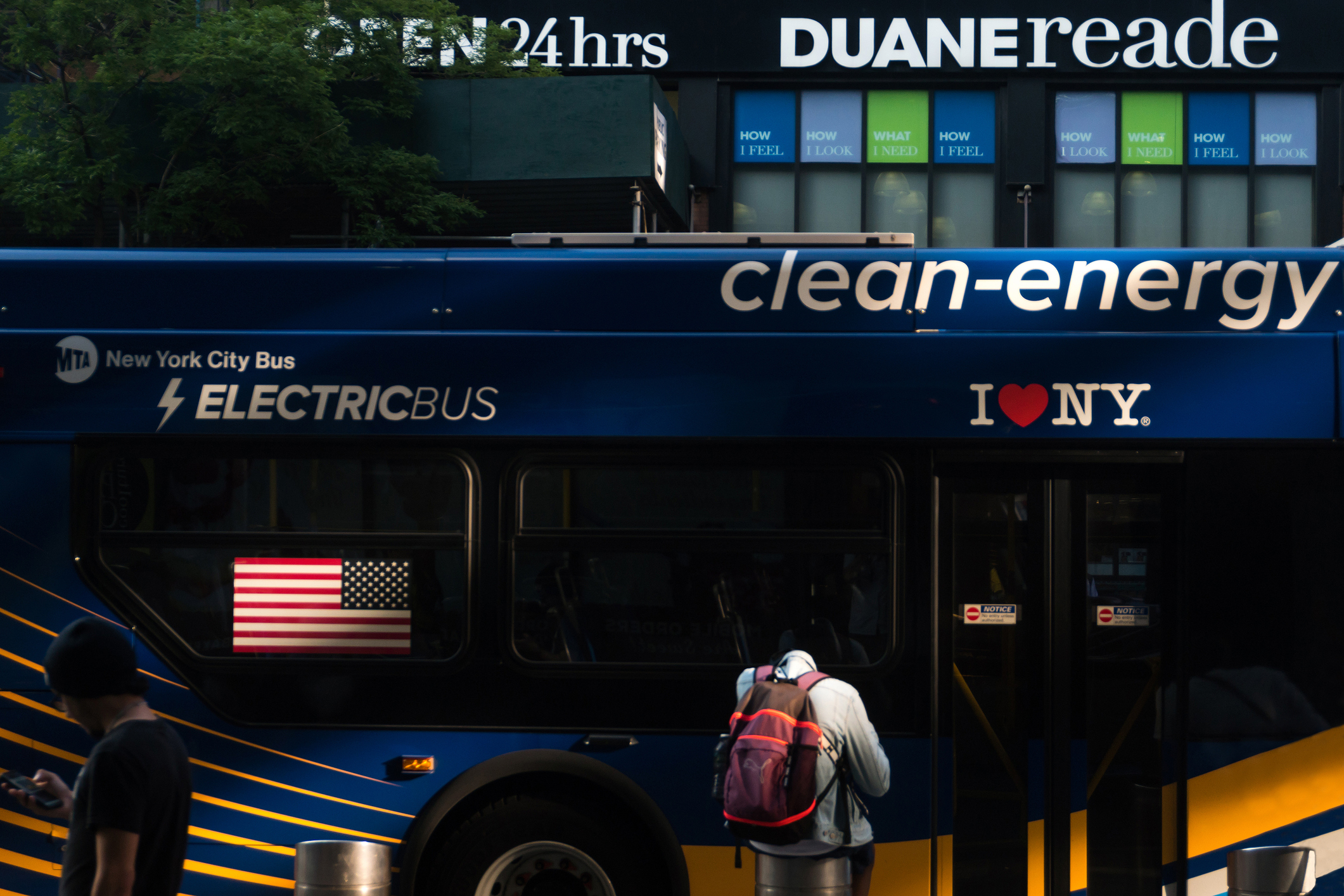The passage of the Climate Mobilization Act in 2019 set New York City up to be a global leader in reducing climate pollution from the city’s largest source: Its buildings. Yet, until recently, NYC has made little progress on reducing emissions from its second-largest source: the transportation sector.
The Sierra Club in NYC—alongside the Majority Leader for the NYC Council, Keith Powers—is facing that problem head-on (or perhaps tailpipe-on). Proposed legislation called the Zero-Emission Vehicles for New York City Act (ZEV4NYC, for short) would require that light- and medium-duty city-owned vehicles be all-electric and emission-free by 2035, and heavy-duty vehicles, shortly thereafter. This is no small feat considering NYC has the country’s largest municipal fleet of over 30,000 cars, trucks, and buses – that means passing this legislation would have immense public health and climate benefits for residents and serve as a model for the country.
The bill addresses transportation pollution by paving the road to clean up the city’s vehicles through setting important purchasing deadlines—dates after which only ZEVs can be purchased by city agencies. As purchasing ZEVs becomes more economically feasible and charging infrastructure is developed, NYC can seize the initiative by making a change that will immediately help New Yorkers and lessen our city’s climate impact.
If passed, this bill would be the most ambitious of its kind in the entire nation in moving a municipal fleet to all-electric. It would cover all the vehicle types that NYC owns or leases. Vehicles like ambulances, fire trucks, sanitation trucks, school buses, and street sweepers are all covered, demonstrating that NYC is prioritizing reducing urban pollution.
According to Department of Health research, NYC has the highest density of primary particulate matter (PM 2.5 ) emissions among large U.S. cities. And like in other large cities, New York’s environmental justice communities suffer disproportionately. Tailpipe emissions contribute to rates of emergency-department visits for cases of PM 2.5-attributable asthma being over eight-times higher in environmental justice communities. This type of health disparity has lasting impacts, with some disadvantaged communities having life expectancies that are ten years lower than their more affluent neighbors. Taking fossil fuel vehicles off the road and replacing them with ZEVs is a necessary step to improve the health of all New Yorkers.
New York State, in general, is a leader in clean transportation. There’s been a lot of momentum on electrifying school buses and transit buses, but we need to do more and on a quicker timeline. New York has 50,000 diesel school buses on the road – a huge source of pollution that creates health problems for both children and their bus drivers. Last year, New York set a target to make sure all school buses across the state are electric by 2035, which is laudable - prioritizing the health of children. The way we get there and by which communities are prioritized first matters. The Sierra Club’s New York team has been working with environmental justice and labor partners to urge Governor Hochul to ensure dedicated funding for electric school buses and to prioritize underserved communities, like the South Bronx, in this transition to clean energy and electric school buses.
As NYC prepares to address its second-largest source of greenhouse gas emissions, cities and environmental leaders around the world are paying attention. During Climate Week NYC, academics, advocates, elected officials, and business leaders will join the Sierra Club to discuss aspects of the Zero-Emission Vehicles for NYC Act and explore its national and global significance.
The vision is clear. The timeline is feasible. Now, NYC must act to transition its fleet to 100 percent ZEVs to combat the climate crisis, safeguard the health of New Yorkers, and make NYC a leader in sustainability.
